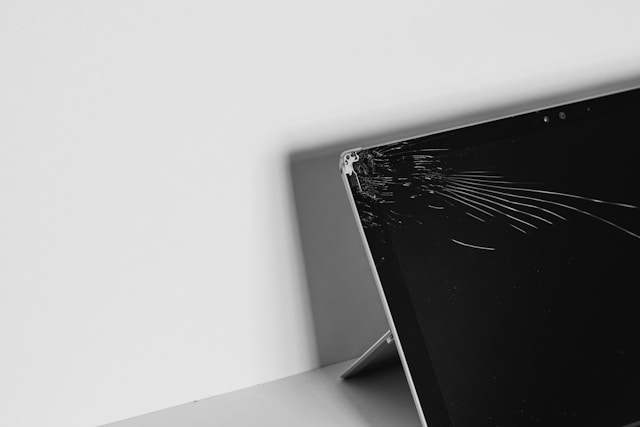Few things are more frustrating than opening your laptop only to discover a cracked display, flickering lines, or a completely black screen. Whether it’s caused by an accidental drop, pressure on the lid, or hardware failure, a broken laptop screen doesn’t always mean you need to buy a new device. In many cases, you can fix the problem yourself or get it repaired professionally at a reasonable cost.
This guide covers everything you need to know about how to fix a broken laptop screen, from identifying the type of damage to step-by-step replacement instructions and prevention tips.
Step 1: Identify the Type of Screen Damage
Not all display issues mean your screen is physically broken. Before attempting laptop screen replacement, check what kind of problem you’re dealing with:
-
Cracked or shattered screen – Physical damage is visible and usually requires replacing the panel.
-
Flickering display or distorted colors – Could be a loose cable, failing graphics card, or damaged LCD.
-
Black screen with power on – The laptop may boot but show nothing, which could be a screen, GPU, or motherboard issue.
-
Lines or spots – Sometimes caused by impact damage, but can also mean a failing display cable.
Understanding the issue helps you decide whether DIY laptop screen replacement is the right solution.
Step 2: Backup Your Data
Before you repair or replace a cracked laptop screen, make sure to back up your files. Even though the screen itself doesn’t affect storage, accidents can happen during disassembly. Use an external hard drive, USB stick, or cloud storage to secure your data first.
Step 3: Check Warranty and Repair Options
If your laptop is still under warranty, contact the manufacturer. Some warranties may cover a cracked screen, while others do not. In cases where coverage isn’t available, compare the laptop screen repair cost with the current value of your device. For older models, replacement might not be worth it compared to upgrading to a new laptop.
Step 4: DIY Laptop Screen Replacement
If you’re comfortable with basic tools, you can attempt a DIY laptop screen replacement. Here’s a step-by-step process:
Tools You’ll Need:
-
Small Phillips screwdriver
-
Plastic prying tool or guitar pick
-
Replacement laptop screen (specific to your model)
-
Anti-static wrist strap (recommended for safety)
Steps:
-
Power off the laptop and unplug it from the charger.
-
Remove the battery if your laptop has a removable one.
-
Unscrew the bezel (the frame around the screen) carefully using the prying tool.
-
Disconnect the damaged screen from its video connector and any adhesive strips.
-
Install the new screen by connecting the cables securely.
-
Reassemble the bezel and tighten screws back into place.
-
Power on your laptop to test the new display.
This method is one of the most cost-effective ways to fix a broken laptop screen, but you must order the correct screen model. Replacement parts are often available online for a fraction of the price of professional repairs.
Step 5: When to Seek Professional Repair
DIY isn’t always the best option. You should consider professional laptop screen repair if:
-
You’re not comfortable handling delicate parts.
-
The issue may involve the GPU, motherboard, or display cables.
-
You own a high-end laptop (like a MacBook or premium gaming device) where parts and assembly are more complex.
The average laptop screen repair cost at a repair shop ranges between $100 and $300, depending on the model.
Step 6: Temporary Alternatives
If you don’t have the time or money to repair your laptop immediately, you can still use it by connecting it to an external monitor via HDMI or DisplayPort. This solution is handy while waiting for replacement parts or professional service.
Step 7: Preventing Future Screen Damage
Once your laptop screen replacement is complete, take steps to avoid similar issues in the future:
-
Use a sturdy laptop case or sleeve when traveling.
-
Avoid placing heavy items on top of your laptop.
-
Keep liquids and food away to prevent spills.
-
Consider a tempered glass screen protector if compatible.
Prevention is the easiest way to extend the life of your laptop’s display.
Conclusion
Knowing how to fix a broken laptop screen can save you time and money. For cracked or shattered displays, a DIY laptop screen replacement is often possible with the right tools and patience. If the issue seems more complicated, professional repair is the safer route, though it comes at a higher cost.









